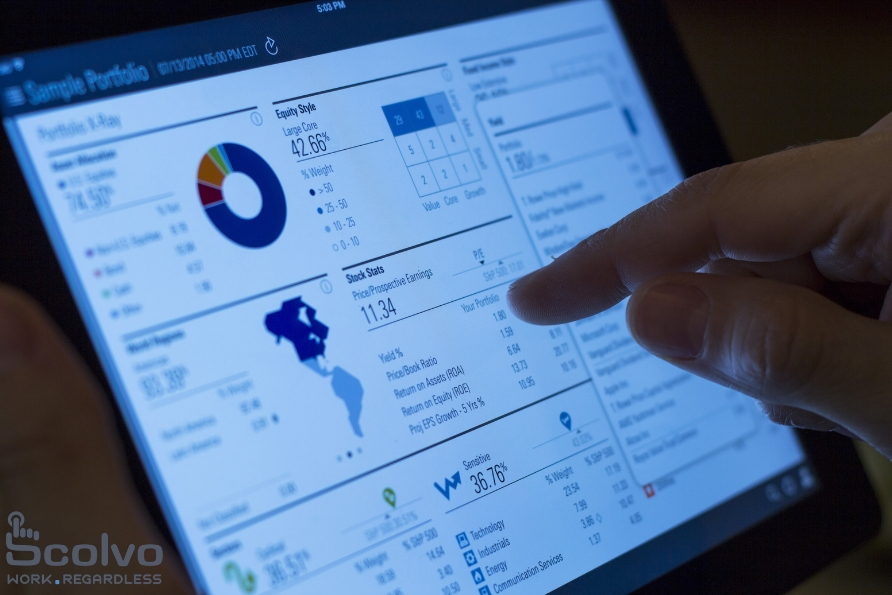Over the last few years, all financial services organizations could familiarize with the concept of Big Data. Widespread digitalization has also made your workplace a proud owner of such an asset. But isn’t it time you consider its usefulness for the business?

How Big is Big?
We all sense that the more digitalization spreads and the more parties are involved, the more data is being created, but if you want to see numbers supporting this feeling: IDC says we’ll have 163 zettabytes by 2025. It’s a ten-fold increase from where we are at now, with enterprises having a 60% share of the pie. It should come as no surprise that the financial services industry is producing data as intensively as few. Hundreds of billions of transactions every day and the regulatory requirements to keep the information on those transactions accessible results in a huge amount of the above-mentioned data.
Investments in Big Data in financial services, including the management and analysis of data assets, are estimated to reach USD 9bn in 2018 by SNS Telecom & IT and grow with a 17% CAGR in the next three years. According to IDC, banking is one of the industries that will spend the most on big data and business analytics solutions. However, the reason behind spending so much is also clear by looking at the revenue numbers: the USD 149bn recorded in 2017 is predicted to almost double in five years, to USD 260bn.
How Useful is Big?
The problem is, most of the data collected at the businesses remain so: collected but never analyzed. We can only hope that the situation has improved since 2016 when Forrester reported that 60-73% of the data in an organization goes completely unused. But it’s an untapped treasure trove and not only (directly) for more revenues. The analytics help enterprises grow customer engagement and come up with new products that meet customer demand: values that are essentials for today’s businesses. A report by Dresdner Advisory Services from 2017 paints a better picture already, claiming that 53% of the enterprises are using big data analytics, with the telecom and financial services sector being the fastest to adopt the new technology.
Use It for Customers’ Delight
So leveraging big data analytics is THE way forward for financial services as well. But what exactly are the best practices in this field? Success in the current business environment will not come without understanding your clients. Financial services providers should also focus on better serving their customers, especially when the whole industry is being disrupted by newcomers that build everything on this principle. From a data perspective, the bottom line is to collect data that is clean and secure to use and work your way from there to delight your customers through analytics.
The client’s behavior will give many hints for what kind of marketing activities would hit the target with them, makes credit assessment easier, as well as fraud detection. New user behaviors lead companies to innovate, for example, to create new trading solutions like High-Frequency Trading (HFT), where data algorithms search for trading opportunities and make the decisions, with or without human interaction.
Areas to explore
If the customer is driving our business decisions, the first thing is to find out what he or she really wants. Banks might have a hard time adjusting to this perspective, with smaller ones being better at it, but precision targeting is something neither of them can ignore. Bigger banks can also involve third-parties to help with the targeted marketing and sales efforts.
By analyzing the available data on customer behavior, e.g. saving and spending habits, financial institutions can make smart recommendations on products that are a good fit. Big data also allows to more precise risk assessment and that could mean more credit products to be sold without increasing the lending institution’s risks.
Activities that require personal interaction, such as a consulting session, can also profit from this type of big data usage, as the consultants can already have the targeted recommendations at hand when they meet the client. What is more, analyzing the consultant’s behavior is also beneficial in performance and resource management.
The many subsectors of the insurance industry are to profit mainly from the risk management capabilities of the new technology. Assessments made by big data analytics are transforming car insurance and health insurance, enabling the insurers to effectively reward safe and preventive behaviors. Such an analysis is capable of reducing costs on both the insurer and the customer side.
Ultimately, big data should lead financial services to a future where they can engage their customers through personal, local, and real-time services.





